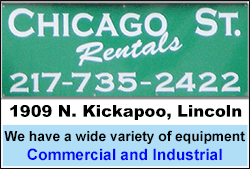|
 Seeking to boost the key measure of retail sales per passenger,
airports are expanding and refurbishing shopping areas and ensuring
routes to gates steer customers past - or through - as many stores
and restaurants as possible. Seeking to boost the key measure of retail sales per passenger,
airports are expanding and refurbishing shopping areas and ensuring
routes to gates steer customers past - or through - as many stores
and restaurants as possible.
Vienna Airport <VIEV.VI>, for example, plans to expand the shopping
and food area in its Terminal 2 by about 50 percent - including a
duty-free store positioned right after security, which passengers
must pass through.
London's Stansted has just completed an 80 million pound ($116
million) makeover that increased space in the departure lounge by 60
percent, providing more room for shops.
"Airports now are basically shopping malls with runways," said John
Jarrell, head of Airport IT at Amadeus <AMA.MC>, which supplies
technology systems to the industry.
Retail accounts for almost a fifth of airports' revenue, a
proportion that has grown steadily in the past decade, according to
airports association ACI Europe, and is increasingly relied upon to
help fund infrastructure and services.

But the lucrative business has been hit by falling numbers of Asian
travelers, traditionally the biggest spenders. Major European
airlines have reported falling demand from passengers from China and
Japan this year as a result of the attacks in Paris and Brussels.
Airport retailers' advantage of a captive audience of travelers has
also been undermined by people being able to shop and compare prices
at will on mobile devices, so they are being forced to employ new
strategies to court customers.
"Air travelers have become very discerning price-wise and impulse
buying at the airport is becoming rarer," said ACI Europe spokesman
Robert O'Meara.
Frankfurt airport is trailing a scheme where passengers in the
Lufthansa <LHAG.DE> lounge can shop on their tablets and have goods
brought to them, and another where passengers can order food from
tablet-toting staff to be brought to the gate and eaten there or on
their plane.
Stansted, Britain's fourth-busiest airport, is offering hand
massages at the Jo Malone area in its duty-free store, while its
bigger London rival Gatwick and Copenhagen airport have thrown up
temporary "pop-up" shops to tempt passengers into spending there and
then, rather than waiting.
Many European airports, including Copenhagen, Gatwick, Stansted and
London Heathrow, also now offer "collect on return" services that
allow customers to buy goods and pick them up when they return from
their trip.
Stansted launched the service at the beginning of the year and
customers are leaving about 3,000 bags a week full of airport-bought
goods and collecting them upon their return.
'THEY WILL SPEND MORE'
Heathrow, Europe's busiest airport, offers passengers not flying via
Terminal 5 the chance to order items from the Chanel store there - a
service much used by high-net worth customers flying to the Middle
East from Terminal 4.
"If you give passengers good service, put them in control of their
time, they will spend more with you," Heathrow CEO John Holland-Kaye
told Reuters.
[to top of second column] |

His airport completed a 40 million pound revamp of its luxury
shopping area last year that added more shops, including Louis
Vuitton and Bottega Veneta.
While the concept of duty-free was invented in Shannon, Ireland in
1947, it has since lost meaning for European travelers, which do not
get the tax-free prices that passengers from outside the European
Union enjoy.
Frankfurt airport operator Fraport <FRAG.DE> illustrated the
importance of Asian travelers when it said that passengers from
China, Russia, South Korea, Japan and Vietnam made up just 7 percent
of passengers in 2015, but 31 percent of retail revenue.
Both Fraport and fellow operator Aeroports de Paris <ADP.PA> said
this week that retail sales per passenger had dropped in the first
quarter of 2016, partly due to the impact of the Paris attacks.
Faced with such hurdles, airports are trying to maximize the time
available to customers to shop by reducing times spent queuing at
security checks and giving people better directions via apps or
touch-screens to find their way around often sprawling terminal
buildings.
Fraport's app, for example, allows passengers to take a picture of a
sign at Frankfurt airport and have it translated into Chinese.
European airports relied on non-aeronautical revenue - sales earned
from retail and car parking - for 40 percent of their revenues in
2013, the most recent year for which data is available, according to
ACI Europe.
Of that revenue, retail - including food and drinks sales -
accounted for 46 percent, up from just 28 percent in 2008. That
equates to about 18 percent of airports' total revenue.

Typically, airports receive fees from retailers comprising of rent
and royalties from sales. Citi analysts said of the airports they
covered, Heathrow had the highest per passenger retail revenues.
The British hub increased its retail revenue by 9 percent in 2015,
about a fifth of its total annual revenues, representing per
passenger retail revenue of 7.58 pounds, up from 7.14 pounds the
previous year.
(Additional reporting by Peter Maushagen; Editing by Pravin Char)
[© 2016 Thomson Reuters. All rights
reserved.] Copyright 2016 Reuters. All rights reserved. This material may not be published,
broadcast, rewritten or redistributed. |